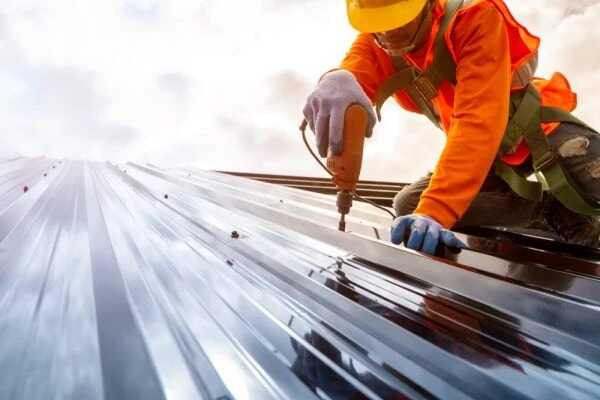
Why Roof Installation Is a Big Deal
Getting a new roof is one of the largest home projects most people will face. It’s not just about replacing old shingles—it’s about protecting the structure, improving energy efficiency, and ensuring the home can stand up to years of weather. A professional roof installation sets the stage for decades of safety and comfort, making it one of the most important investments in any property.
The Role of a Roof in Daily Life
A roof does more than keep rain and snow out. It directly affects temperature regulation, energy costs, and even the air quality inside the home. A strong, well-installed roof keeps warmth in during winter, blocks heat in summer, and prevents moisture from seeping into insulation or walls. Without this protection, everyday comfort quickly deteriorates.
That’s why roof installation should be carefully planned, not rushed. The choices made now will impact the home for decades.
Signs It’s Time for a New Roof
Most homeowners hope to delay replacement for as long as possible, but knowing the warning signs is key. If you notice any of the following, it may be time to plan for roof installation:
- Shingles that are cracked, curling, or missing.
- Frequent leaks or water stains inside the house.
- A sagging roofline.
- Mold or moss spreading across the surface.
- A roof that’s 20–25 years old or more.
Even if damage looks small, it often spreads quickly. A professional inspection will confirm whether repairs can suffice or if a new system is necessary. For first home buyers sunshine coast, recognizing these signs early can prevent costly emergency repairs down the line.
Choosing the Right Materials
One of the biggest decisions in roof installation is selecting the material. Different options vary in cost, longevity, and appearance:
Asphalt Shingles
Affordable and versatile, lasting around 15–20 years.
Metal Roofing
Durable, energy-efficient, and long-lasting, often 40+ years.
Slate and Tile
Premium options with lifespans of 50+ years but requiring extra structural support.
Wood shakes or shingles
Offer a classic, natural look but require more maintenance. Homeowners in Southeast Queensland might want to consult with local timber suppliers like timber supplies SEQ to ensure quality materials and proper installation guidance for these more demanding roofing options.
Flat Roofing Systems
Ideal for modern homes, offering usable rooftop space with proper drainage systems.
The right choice depends on your budget, style preferences, and long-term plans for the home.
Preparing for Roof Installation
A new roof requires planning beyond just hiring a contractor. Homeowners should prepare by:
- Clearing the attic to protect belongings from dust.
- Moving outdoor furniture and covering landscaping.
- Arranging parking space for contractor vehicles.
- Informing neighbors about the project timeline.
These steps make the installation smoother and reduce stress for everyone involved.
The Importance of Professional Installation
Even the best materials will fail if installed incorrectly. Proper roof installation involves more than nailing shingles—it requires precision in layering underlayment, aligning flashing, securing ventilation, and ensuring water flows away correctly.
A professional team guarantees the job is done right the first time. This not only prevents leaks and drafts but also ensures the new system complies with local building codes. For long-term protection, it’s always worth investing in skilled workmanship.
How Roof Installation Affects Energy Efficiency
Roofs are a frontline defense against energy loss. Poorly installed systems let air escape, driving up heating and cooling costs. Modern installation methods focus on sealing gaps, adding insulation, and sometimes applying reflective coatings that reduce heat absorption in summer.
Homeowners who plan their roof installation with energy efficiency in mind often see lower utility bills and a more comfortable indoor environment.
What to Expect During the Process
For many homeowners, the idea of tearing off an old roof sounds disruptive. In reality, contractors follow a clear process designed to minimize inconvenience:
- Inspection and Planning: Evaluate the old roof, choose materials, and set a schedule.
- Tear-Off: Remove old shingles or membranes and inspect the decking underneath.
- Repairs to Decking: Replace damaged wood to ensure a solid foundation.
- Underlayment Installation: Add moisture and weather barriers.
- Shingle/Material Installation: Lay down the chosen material with precision.
- Final Inspection: Check flashing, ventilation, and drainage.
A typical residential roof installation takes a few days, depending on size and complexity.
The Cost of a New Roof
Roof installation costs vary widely depending on materials, size, and labor. Asphalt shingles are the most affordable, while slate and tile are premium. While the price may seem high upfront, remember that a roof protects everything inside the home.
Investing in quality installation prevents bigger expenses later from water damage, structural repairs, or premature replacement.
Maintenance After Installation
Even new roofs need regular care to stay strong. Homeowners should:
- Schedule annual inspections.
- Keep gutters clean to prevent water buildup.
- Trim trees to reduce debris and branch damage.
- Address small issues like lifted shingles immediately.
With consistent maintenance, a new roof installation can last decades and deliver maximum value.
The Long-Term Value of a New Roof
A new roof adds more than protection—it adds value. Homes with modern, well-installed roofs sell faster and often at higher prices. Buyers see a new roof as one less major expense to worry about.
For homeowners not planning to sell, the value comes in everyday comfort, lower energy bills, and peace of mind that the house is secure.
Looking Ahead: Roofing Trends for Modern Homes
Today’s roofs are being designed for more than function. Modern installation trends include:
- Cool Roofs that reflect sunlight.
- Solar-Ready Roofs that integrate panels seamlessly.
- Eco-Friendly Materials that reduce environmental impact.
- Architectural Shingles that add dimension and curb appeal.
Roof installation is no longer just about replacement—it’s about upgrading to smarter, more efficient systems.
